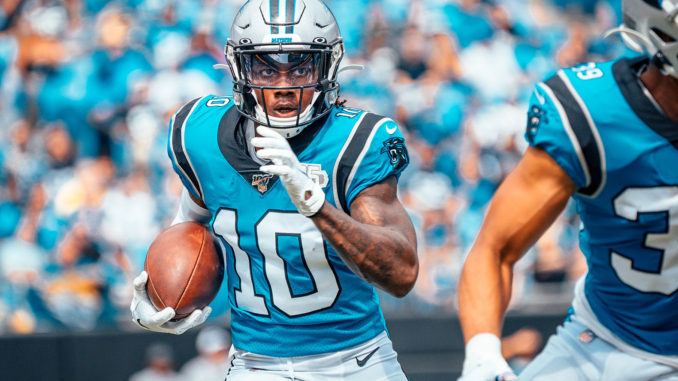
Curtis Samuel signed a three-year, $34.5 million deal with the Washington Football Team this offseason, and, after his best season to date in 2020, many dynasty managers are excited to see him paired with fellow Washington free agent signee Ryan Fitzpatrick. If head coach Ron Rivera and offensive coordinator Scott Turner can use Samuel correctly, there is good reason for such optimism.
Samuel came out of Ohio State with excellent speed metrics (4.31 40-yard dash, and a 110.6-speed score, in the 100th and 92nd percentile, respectively, per Player Profiler) and a reputation as a dual receiving/rushing threat. He totaled 1,636 yards from scrimmage and 15 combined touchdowns in his 2016 junior year. The Panthers drafted him 40th overall in the second round of the 2017 NFL draft. In his first two years in the league, Samuel managed only 609 receiving yards (in just 22 of 32 games) and was called on to run the ball only 12 times. Things were not looking great for Samuel at this point in his career, and some dynasty managers were out on him after the two disappointing years.
Samuel took a bit of a step forward in 2019, gaining 627 receiving yards on 106 targets (with mostly Kyle Allen at quarterback), and rushing 19 times for 130 yards and a touchdown. He only caught 50.9% of his targets, but averaged 14.5 air yards per target (Player Profiler) and found the end zone six times as a receiver. Still, dynasty managers were waiting for a true breakout from Samuel.
That breakout did not really come in 2020, though Samuel did progress as a player on the field and in fantasy. His air yards per target and receiving touchdowns were basically half of what they were in 2019, but he increased his receiving yards to 851 and was asked to carry the ball 41 times. Samuel’s yards per target increased from 5.9 to 8.7, and his yards per route run went from 1.16 to 1.95, while his true catch rate (which divides receptions by catchable targets) rose to 92.8% from 80.6% (Fantasy Data). He also improved his yards after the catch average from 2.9 to 4.6. All this translated to better fantasy production, as Samuel rose from WR48 in FanDuel points per game in 2019 to WR27 in 2020 (Fantasy Data). The arrow seems to be pointing up for him as we move into 2021.
What was the difference between 2019 and 2020? Teddy Bridgewater was a slight upgrade at quarterback, but the biggest change seems to be in how Samuel was used. With the addition of Robby Anderson as a second outside threat to pair with D.J. Moore, new head coach Matt Rhule and new offensive coordinator Joe Brady moved Samuel primarily to the slot. His slot snap percentage increased from 28.1 in 2019 to 71.8 in 2020 (Pro Football Focus). That change, combined with the increased carries, shows the coaching staff was utilizing Samuel better, trying to get him the ball quickly so he can use his athleticism.
Can Samuel continue his progress in 2021 with Washington? Perhaps. He is paired with a better quarterback than he had in the past two years in Carolina. He is, as of now, the WR2 (behind Terry McLaurin), whereas he was the WR3 on the Panthers. He returns to familiar coaches Rivera and Turner. However, those are the coaches that did not seem to use Samuel properly in Carolina. Additionally, if Washington does not add another outside threat in the draft, they might be tempted to play Samuel on the perimeter again. Still, there is reason to believe Samuel can still produce moving forward. One has to think Turner saw what Brady did in Carolina and will learn from his past apparent mistakes. There is the quarterback upgrade, too. Furthermore, Samuel has lots of talent and will not turn 25 until August. Samuel should produce at his 2020 levels – if not better – in Washington, making him a player worth targeting in startup drafts and trade offers. Do not reach for him in a draft, as he can be had later than he probably should (his March DLF ADP is 95.17 and WR47). In trades, try offering a mid to late-second-round pick for him first.